
|
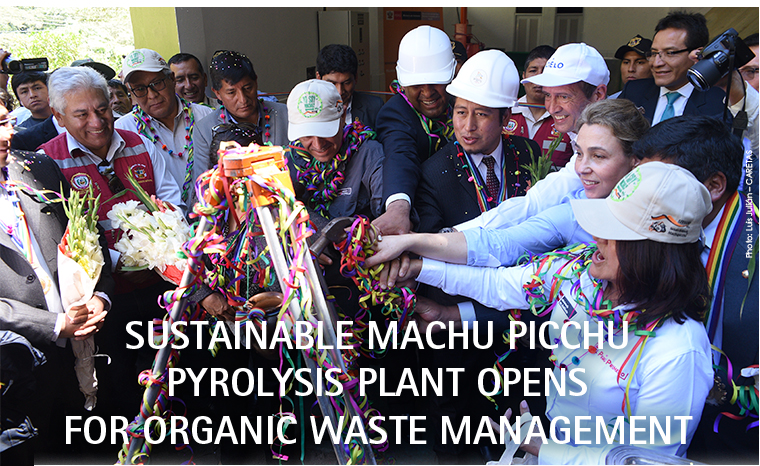
|
|
The strategic alliance between Inkaterra, AJE Group and the Municipality of Machu Picchu Pueblo, succeeded in turning Machu Picchu into the first destination in Peru and Latin America to sustainably manage most of its solid waste.
Continuing with the initiatives for the conservation and environmental care of Machu Picchu, the partnership opened the first Organic Waste Treatment Plant in a ceremony attended by authorities from the Ministry of Environment and the Natural Protected Areas National Service (SERNANP).
The innovative technology processes through pyrolysis (chemical decomposition at high temperatures in the absence of oxygen) eight tons of waste per day to generate bio-char, a natural and nutrient-rich fertilizer that will contribute to the reforestation of the Andean cloud forest as well as agricultural productivity in Machu Picchu.
“Our Wonder of the World can now be perceived as a sustainable destination, an example of waste management for ecotourism worldwide. We have managed to raise awareness in the local community, which now segregates waste from homes and establishments,” added Inkaterra founder, José Koechlin, who conceived these groundbreaking projects.
|
|
More Info
|
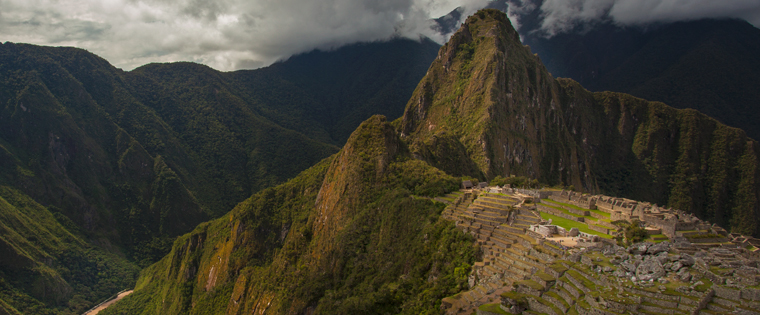 |
|
MACHU PICCHU’S CIRCLE OF SUSTAINABILITY
Winner of the prestigious “Die Goldene Palm” award in Germany and the Peruvian ‘Líderes+1’ prize, Inkaterra and AJE Group’s initiative to turn Machu Picchu into a global model of sustainability started in 2017 with the donation of the first Plastic Waste Compacting Machine in Machu Picchu Pueblo. This project helped preventing Machu Picchu from entering UNESCO’s Patrimonies at Risk list. Currently 14 tons of PET plastic are processed on a daily basis.
In 2018, a Biodiesel and Glycerin Production Plant was opened at Inkaterra Machu Picchu Pueblo Hotel. Through the collection of used cooking oil from Machu Picchu Pueblo’s homes, lodges, hotels and restaurants, 20 gallons of biodiesel fuel are produced daily. Every month, 6000 liters of used oil are treated here, preventing its spillage into the Vilcanota River. It is estimated that one liter of oil pollutes 1000 liters of water. Additionally, petrochemical-free glycerin obtained in this process is used by the Municipality of Machu Picchu to clean its sidewalks and stone floors.
“We are very happy to be part of this change in Machu Picchu Pueblo and to announce that, with this new plant, the circle of sustainability for which we have been working for three years is closing. Machu Picchu officially becomes a sustainability model in Latin America,” said Jorge López-Dóriga, AJE Group’s Executive Communications and Sustainability Director.
|
|
More Info
|

|
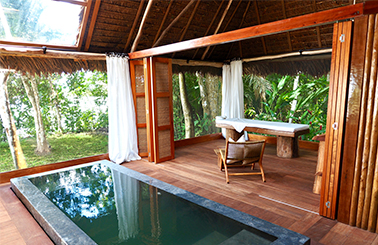
|
|
ENA SPA
AMONG WORLD’S MOST BEAUTIFUL SPAS
IN RAINFORESTS
Travel + Leisure handpicked world-class spas with a sense of place, which “capitalize on holistic habits and healthy techniques traditionally practiced in their part of the world.”
Inkaterra Reserva Amazonica’s ENA Spa stands among “some of the most jaw-dropping spas around the world.” According to the article, ENA delivers “the perfect end to a day out in the rainforest, especially with an Amazon Purification Treatment. It begins with a lymphatic drainage massage and a body masque derived from the medicinal cat’s claw vine, which has anti-inflammatory and cleansing properties, then finishes with a cooling Amazonian body mist enriched with cotton, sunflower and olive oils.”
|
|
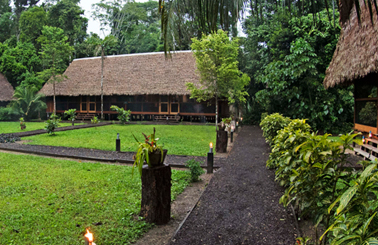
|
|
LOYOLA UNIVERSITY CHICAGO PRESENTS
RESEARCH PROJECTS PERFORMED
IN MADRE DE DIOS
In March 2019, alumni from the Retreat & Ecology Campus (Institute of Environmental Sustainability, Loyola University Chicago) stayed at Inkaterra Guides Field Station for the annual course on Conservation & Sustainability of Neotropical Ecosystems.
Inspired by Inkaterra’s scientific research performed since 1978 in the Amazon rainforest of Madre de Dios (an endeavor portrayed in various academic publications), eleven students focused their fieldwork on reptiles and amphibians, Amazonian palms, native arachnids and tropical fungi.
To learn more about Inkaterra Asociación’s workshops, please contact: contact@inkaterra-asociacion.org.
|
|
|
More Info
|
More Info
|

|
|
NATIONAL GEOGRAPHIC TRAVELER FEATURES
INKATERRA HACIENDA URUBAMBA
For the latest issue of National Geographic Traveler, explorer Alec Jacobson ventured into the highlands of Cusco to reconnoiter Andean food and culture.
“Every detail, from the Inca textiles on the walls to the pisco sours at the bar, seems thoughtfully created at each of Inkaterra’s boutique hotels around Peru,” Jacobson writes. “In Cusco, La Casona was originally an Inca structure, redesigned by the Spanish, and then restored into 11 elegant rooms off the quiet Plazoleta de las Nazarenas. Make sure to try the crispy guinea pig for dinner. In the middle of the Sacred Valley, reserve a private casita at the Hacienda Urubamba. Both properties are part of the National Geographic Unique Lodges of the World.”
|
|
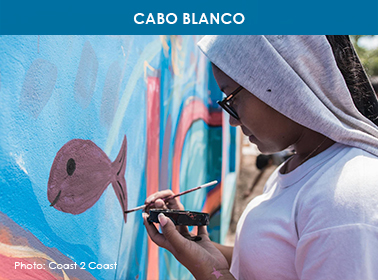
|
|
INKATERRA SPONSORS ‘SOMOS MAR’ FESTIVAL
IN CABO BLANCO
Throughout four weeks, Coast 2 Coast will present Somos Mar Festival in five iconic beaches across Northern Peru. Sponsored by Inkaterra, Somos Mar will bring to Cabo Blanco storytelling workshops for schoolchildren and artisanal fishermen, to produce engaging media content that will celebrate the unique meanings, values, and characters in traditional fishing communities to create, reinforce, or enhance awareness on community identity, conservation and sustainability.
Having trained local anglers on marine stewardship and sustainable fishing techniques while working for the declaration of Cabo Blanco’s artisanal fishing as a Cultural Patrimony of Peru, Inkaterra aims to empower youth and local actors promoting events such as Coast 2 Coast’s Somos Mar.
|
|
|
More Info
|
More Info
|
|
|